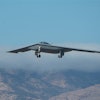Beijing is unlikely to ever satisfy Washington's hopes for greater military transparency, and tensions between their armed forces will remain, Chinese scholars said Tuesday.
They spoke following an annual Pentagon report published this week that said China's drive to major military power status is being pursued in a secretive manner that "increases the potential for misunderstanding" and conflict with other nations.
Beijing-based scholars said the People's Liberation Army has sought to be more open but would continue to adhere to a different standard of transparency.
"China might never meet the U.S. standards on military transparency," said Shi Yinhong, an expert on the U.S. at Renmin University.
"Although China has steadily increased its military transparency over the past few years, it's currently impossible for China to reach the level that the U.S. demands," Shi said.
Long shrouded in secrecy, the PLA has in recent years issued its own reports on its military and engaged with the armed forces of other nations through port visits and joint drills. Diplomats say they hope that will help calm fears over the motivations behind its military buildup.
However, top officers are believed to highly doubt the foreign policy advantages of greater transparency, especially with the United States, considered by Beijing its greatest rival.
The delayed release of the Pentagon report comes amid deep dissatisfaction in Beijing over upcoming U.S.-South Korea joint naval drills in the Yellow Sea. China was also upset by statements last month from U.S. Secretary of State Hillary Clinton seen as inserting the U.S. into the territorial dispute between China and Southeast Asia nations over the South China Sea.
In January, Beijing suspended contacts with the U.S. military as retaliation for a $6.4 billion arms sale to Taiwan, the self-governing island China claims as its own territory.
The combination of issues has led to an "unprecedented surge" in tensions, although the advantage the U.S. has in military capability means the potential for actual conflict is low, said Zhu Feng of Peking University's School of International Studies.
"The Pentagon is fully aware that there's a huge gap between the two countries' military power. It a joke to claim that China is going to attack the American aircraft carriers," Zhu said.
There was no immediate comment on the Pentagon report from China's Foreign Ministry and the Ministry of National Defense, which manages the 3.2 million-member People's Liberation Army.
The report dwelled heavily on PLA developments in naval expansion and missile technology, two areas that have attracted growing concern from military experts in the U.S.
It said China was developing a ballistic missile to attack moving aircraft carriers at a range of more than 930 miles (1,500 kilometers). No indication was given as to how close Beijing was to mastering the technology involved. While final testing of the missile is believed to be a year or two away, some experts doubt accuracy could be attained any sooner than a decade after that.
The report also said China could start construction of its first aircraft carrier by the end of the year and had begun a program to train 50 pilots to operate fixed-wing aircraft from an aircraft carrier. Experts say China appears to be building land-based mock ups of a carrier flight deck and is also sending pilots to Russia for training.
___
Associated Press researcher Zhao Liang contributed to this report.


















